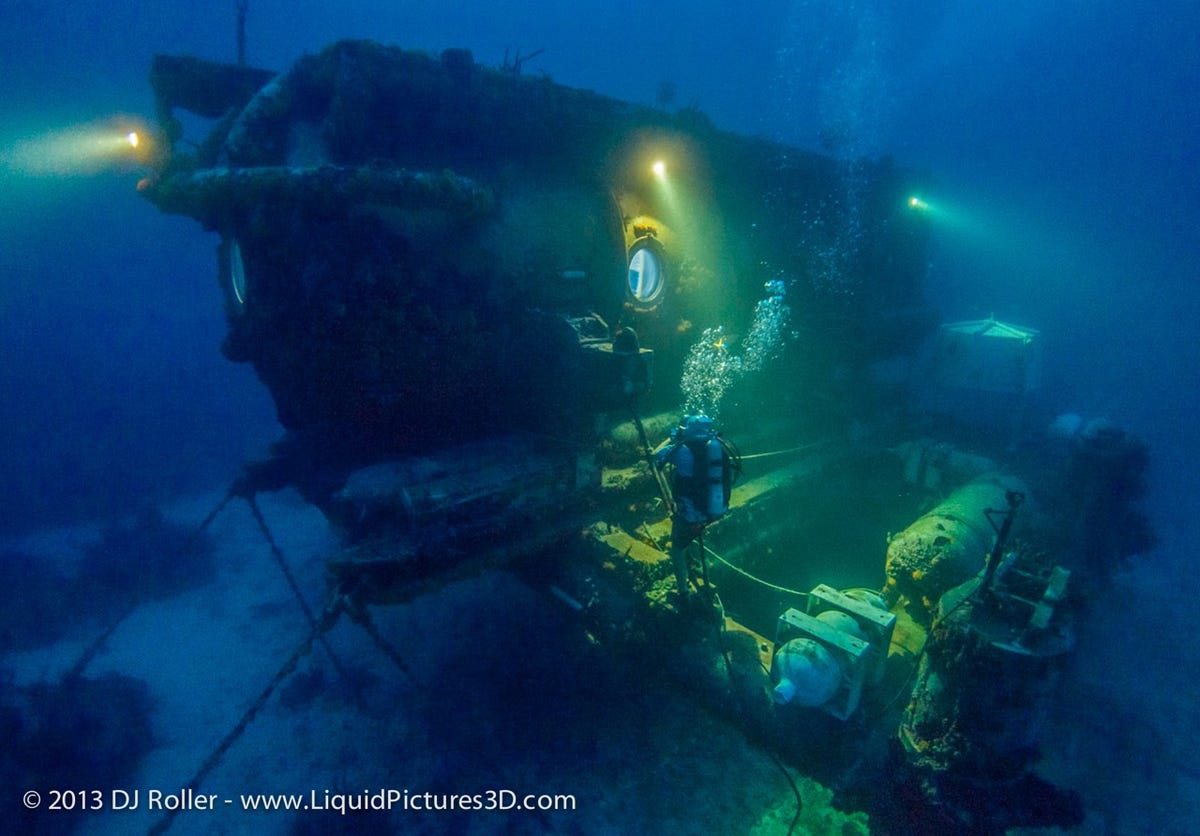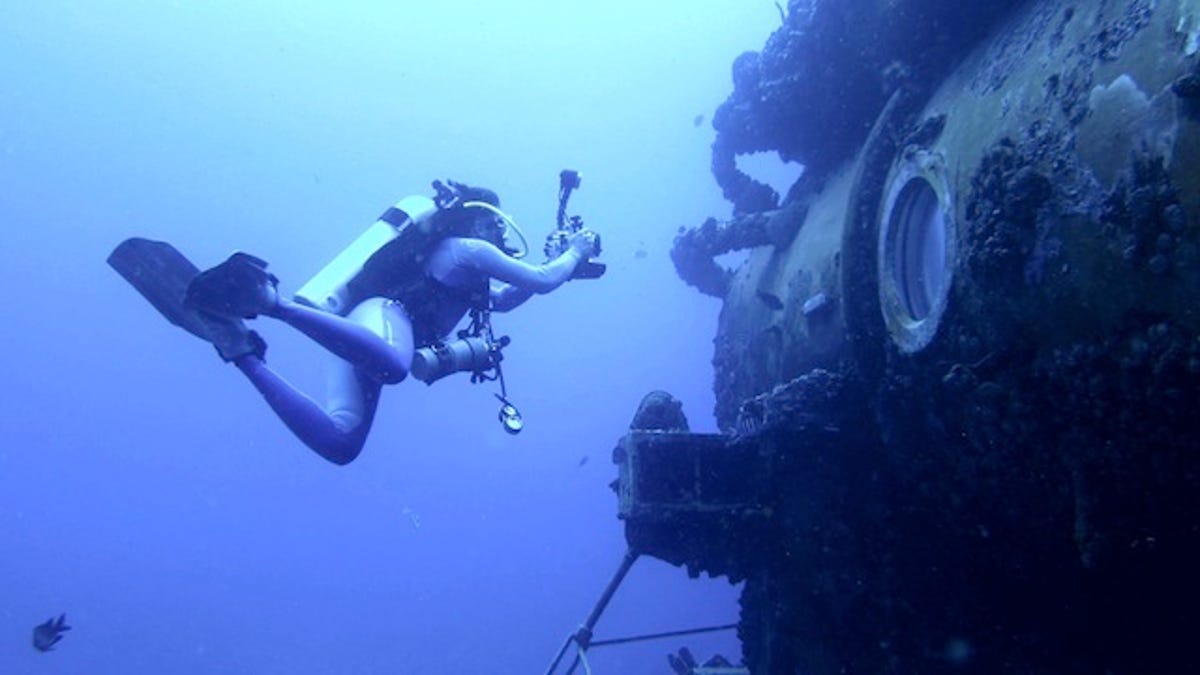Fabien Cousteau's Mission 31: Adventures in undersea living (pictures)
Spring fling: Take one undersea lab, add six divers sharing discoveries of the deep, throw in a couple of live cameras, let steep for 31 days.

Aquarius lab
In the spring, Fabien Cousteau and five others will dive down to Aquarius, an undersea lab 63 feet below the surface in the Florida Keys National Marine Sanctuary. The school bus-size lab will be their home for 31 days, while they explore the deep and conduct scientific research. While the aquanauts study the marine life, anyone above the surface can tune in to study them, throughout Mission 31, in real time.
Fabien Cousteau
Cousteau, 46, is a filmmaker and ocean explorer like his famous grandfather, Jacques-Yves. He describes Mission 31 as "an underwater classroom," where he and his team will share their discoveries with viewers -- including through daily Skype video calls with students, live reports on the Weather Channel, and real-time updates on social media.
Cousteau alongside Aquarius
A habitat like the Aquarius, the world's only undersea research lab, enables aquanauts to live among their subjects for days or weeks at a time.
"You’re able to discover a lot more, discover new species, and the interconnectivity and the wonders of our one and only life-support system -- which is this planet -- and why it is that it's important for us to pay attention to it," says Cousteau.
Fabien Cousteau
Cousteau's undersea living expedition, Mission 31, is similar to one his grandfather undertook in 1963, but this one will go deeper and one day longer.
Jacques Cousteau and his diving saucer
In this June 1963 photo, Jacques Cousteau is seen near his diving saucer in the Red Sea.
In the 1960s, Cousteau led a couple of experiments in undersea living known as Conshelf One, Two, and Three (short for Continental Shelf Station). In 1962, oceanauts Albert Falco and Claude Wesly lived underwater off Marseilles, France, for a week.
The following year, about a half dozen oceanauts lived and worked in an undersea colony in the Red Sea for 30 days, while a support team worked above the surface. The Oscar-winning film "World Without Sun" chronicled their time underwater during Conshelf Two.
Conshelf Three, in 1965, aimed for a more self-sufficient habitat. Oceanauts spent three weeks going deeper -- more than 100 meters down -- and working on a mock oil rig under the surface of the Mediterranean near Nice. Cousteau, however, soon after repudiated the idea of exploiting the ocean's resources.
Cousteau inside Aquarius
During the mission, the team will conduct research, including studying how climate change, overconsumption, and pollution are affecting ocean health. They'll also participate in experiments on the physiological and psychological effects of living under the sea.
And the aquanauts will have some cool tech to help them do their work: underwater robots and motorcycles. Cousteau also promises to highlight "some surprise tech" during the mission, but you'll have to tune in to find out more.
"We’ve got to keep a few surprises, right?" says Cousteau, seen here just inside -- and a little outside -- Aquarius.
Fabien and Jacques Cousteau
Fabien Cousteau on his grandfather's shoulders in 1970.
The Calypso
Fabien Cousteau grew up on the decks of the Calypso (seen here in 1975 in Monaco) and Alcyone, the ships that transported his grandfather and crew on many of their expeditions.
A habitat built for 6
Aquarius, the world's only undersea research lab, is about 43 feet long and about 9 feet wide inside. There are six bunks, a shower and toilet, hot water, a refrigerator, a microwave, and air conditioning. The longest mission Aquarius has hosted was 18 days, but 10 days is more typical.
Aquarius is owned by the National Oceanic and Atmospheric Association and operated by Florida International University.
Astronauts as aquanauts
Many astronauts become aquanauts at Aquarius to train for space missions. The lab has hosted 18 NASA training missions.
Astronaut Scott Carpenter, who died last month at age 88, was the first person to go into both outer and inner space. In 1965, he became an aquanaut and spent a month living underwater as part of the US Navy's Sealab II project off the California coast.
Sylvia Earle and Fabien Cousteau
Oceanographer Sylvia Earle, shown with Fabien Cousteau inside Aquarius, plans to visit Mission 31 as a guest. In 1970, Earle led the first all-female team of aquanauts on a research expedition as part of Tektite II.
Diving deep
For Cousteau and most of his team, Mission 31 means a new experience living as saturation divers. Saturation diving enables aquanauts to explore the deep for a much longer period of time compared with surface-based diving.

Saturation diving
With surface-based scuba diving, there are limits to how long and how deep divers can go before they need to return to the surface. Due to breathing gases at a certain depth, divers absorb inert gases in their tissues. If divers stay too long, they can ascend only at a much slower rate without suffering any ill effects.
"The benefit of saturation diving is that no matter how long a diver stays at a certain depth, his tissues can only absorb so much gas," says Thomas Potts, director of Aquarius Reef Base. The tissues become saturated, he says, like a sponge in a bucket of water.
Aquanauts working at Aquarius become saturated to that depth, and decompress only once at the end of the mission, which takes roughly 15 hours, Potts says. This means divers can venture out about 10 times longer every day compared with surface-based dives, he says. "And since they only need to decompress one time, they greatly reduce the risk of decompression sickness (the bends) because they aren't requiring their body to go from the surface, to depth, and back again multiple times per day."
Testing scuba gear
Jacques Cousteau (left) and Emile Gagnan co-invented the Aqua-Lung, the first open-circuit type of scuba diving equipment to become commercially successful. This photo was taken in the 1940s at a pool in New York.
Jacques Cousteau, the inventor
Jacques Cousteau, seen here in 1965, is best known for co-inventing the Aqua-Lung, but he also had a hand in developing technology like submersibles and underwater camera equipment.
"He was fascinated with a world that was really a complete mystery and there were no tools to go and explore it," Fabien Cousteau says. "It wasn't necessarily that he wanted to be an inventor per se but he had to invent the tools to go out there and see what it was like."

